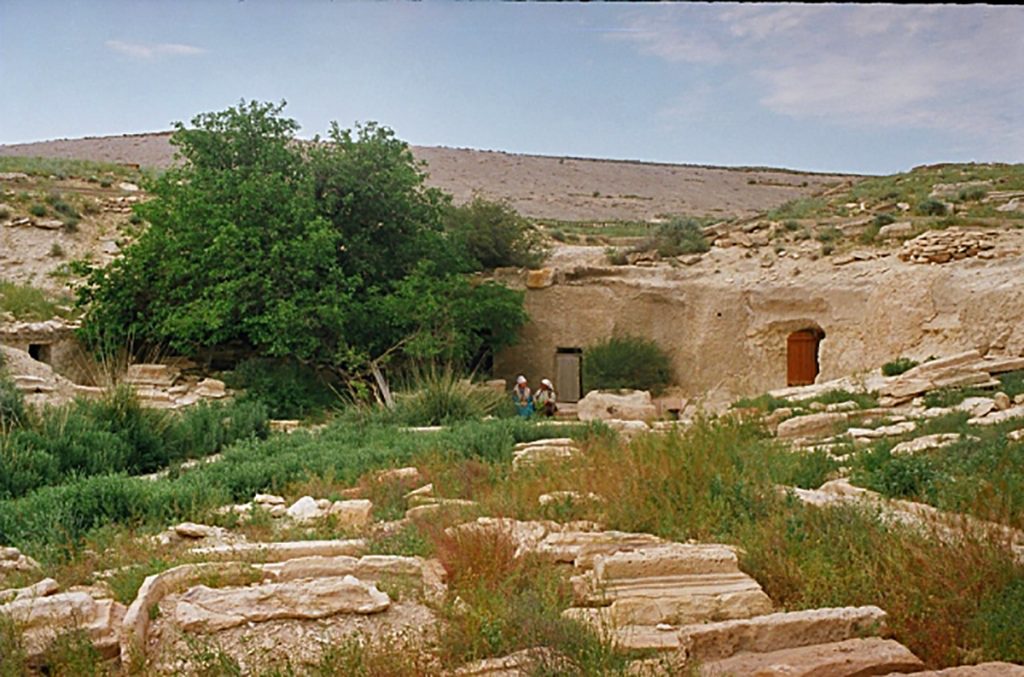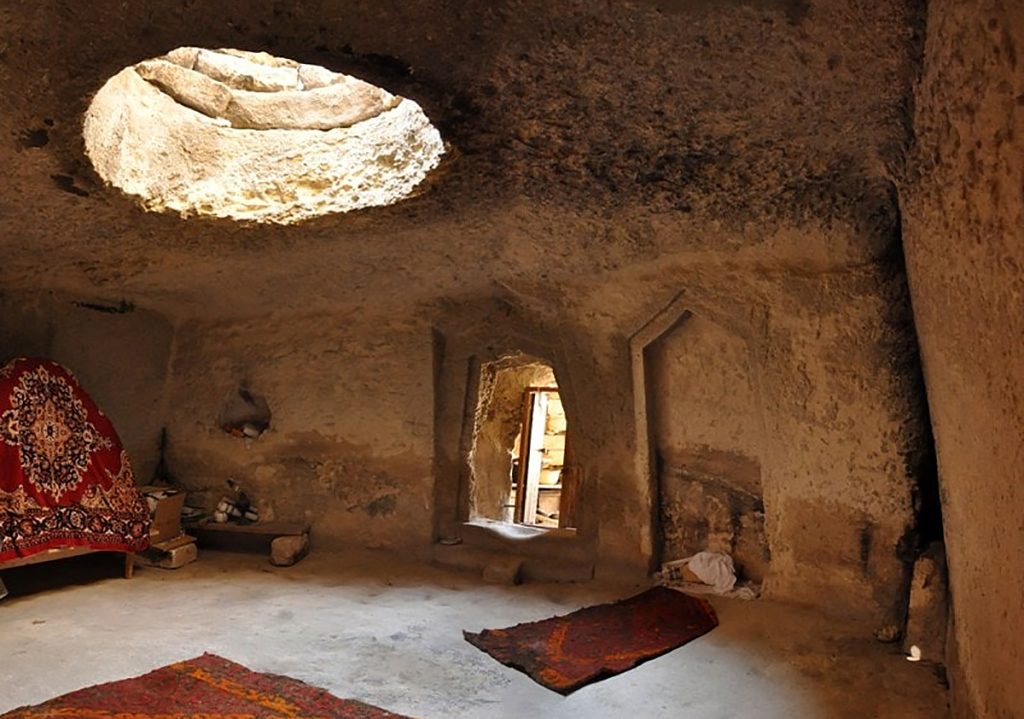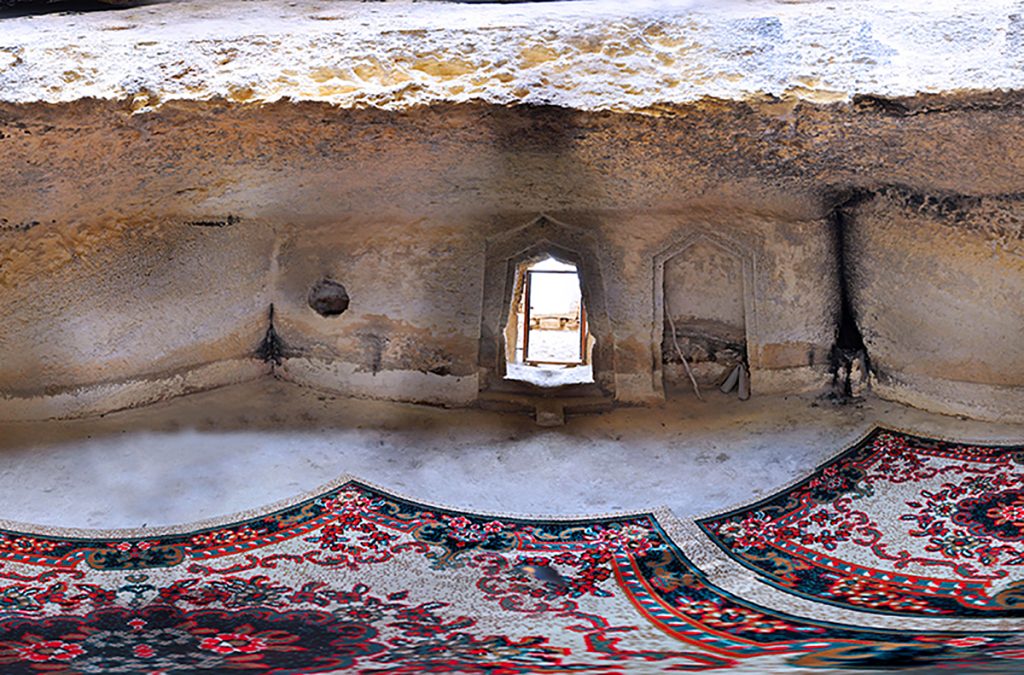Masat-ata Underground Mosque stands as a poignant testament to the revered historical figure, Masat-ata, deeply esteemed by the residents of Mangystau. Positioned in the northwestern expanse of the Bostankum desert, approximately 25 kilometers southeast of the village of Ushtagan, the Masat-ata necropolis encapsulates the devotion and cultural significance embedded in the local heritage.

Masat-ata, acknowledged as one of the 362 saints, emerges from history as a heroic defender of his country, leaving an indelible mark on the spread of Islam in Mangystau. Legend paints him as an invincible figure, impervious to weapons—bullets, swords, and fire alike. His enemies, driven to desperation, unraveled his secret vulnerability during his morning prayers, leading to his tragic demise. Although Masat-ata’s physical remains were never interred due to the mystical circumstances of his death, his dwelling place, an underground mosque, endures as a spiritual sanctuary.
The necropolis, situated on a lengthy ridge with solid limestone rocks, boasts unique monuments, including koitas, stone fences, and signs dating back to the medieval Oguz-Kypchak period. A total of 525 monuments, with about 300 being koitasy, grace the landscape, reflecting historical epochs from the XIV-XVIII centuries. Symbolic reliefs adorn tombstones, and a remarkable stone-carved statue of 4 rams captures attention.

Harmoniously aligned on the northeastern edge of the necropolis are Kazakh memorials, coexisting with large buildings, koitas, and sandyktas. Representing the 18th to the 20th centuries, these memorials showcase distinctive features, including unique works of relief art like kulpytas and anthropomorphic steles.
The crowning jewel, the Masat-ata Underground Mosque, resides in the southwest of the necropolis. Carved from limestone rocks, this ancient spiritual haven dates back to approximately the 10th–14th centuries. Internally resembling a yurt, with a height of around 2 meters, the mosque features a shanyrak-like opening at the top for light and heat. The outer surface, adorned with stacked boulders and a domed cover, includes cut-out shelves for storage. A corridor, aligned towards Mecca, enhances the sacred ambiance.

Adjacent to the mosque, a dug ditch with a 2.5-meter diameter signifies the second construction phase. Gutters above a slab stone and a nearby dug well reveal additional facets of this sacred space. Recognizing its historical and cultural significance, the underground mosque and Masat-ata necropolis were officially designated as objects of state protection at the republican level in 1982. This acknowledgment solidifies their importance as enduring symbols of Mangystau’s rich heritage.



